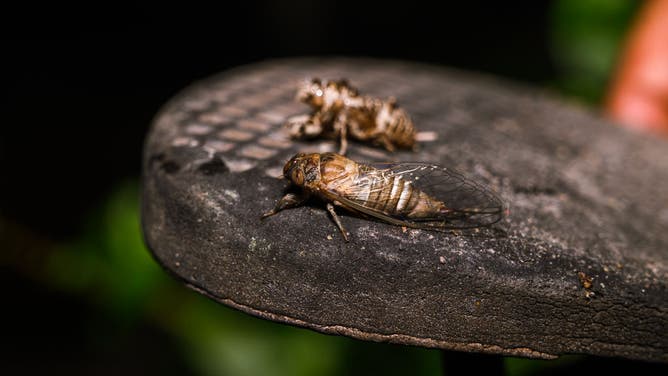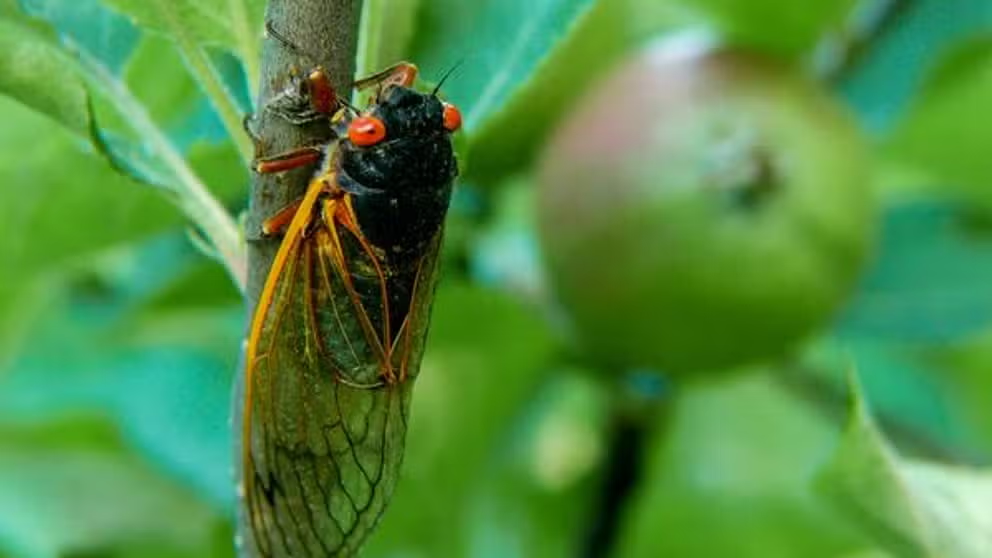Trillions of cicadas are weeks away from their emergence
There are 12 broods or groups of cicadas with 17-year life cycles and three broods with 13-year life cycles. The insects are not harmful to animals or humans, but their collective sounds can be as loud as a lawnmower or motorcycle. According to studies, cicadas emerge when the ground reaches a temperature of around 65 degrees.
Annual vs. Periodical Cicadas
Annual vs. Periodical Cicadas: The differences between these two bugs.
Some of the nation’s top bug experts are warning that the coming months may be less peaceful than residents trying to get a good night’s sleep would like, as two groups of periodical cicadas emerge from the ground with their sometimes-deafening shriek.
According to the University of Illinois Extension office, two groups of cicadas, or what are known as broods, will emerge when ground temperatures reach around 65 degrees and be around for several weeks.
The 13-year Brood XIX group is thought to be one of the largest collections of the bugs and can be found from southern Iowa to Georgia and South Carolina, while the 17-year Brood XIII group will emerge in communities across the Midwest from northern Iowa through Ohio.
Because their reemergence is entirely dependent on the temperature of the ground, not all communities will see the bugs emerge simultaneously, with southern cities likely beginning the process in April and more northern locations not happening until June.
GIANT BUG FOUND AT AN ARKANSAS WALMART IDENTIFIED AS A JURASSIC-ERA INSECT

The cicadas are sound-producing insects in a superfamily, the Cicadoidea, of insects in the order Hemiptera (true bugs).
(Photo by Soumyabrata Roy/NurPhoto via Getty Images / Getty Images)
Cicadas aren’t locusts and are not harmful to pets or humans, but do feed off the roots of trees during their more than a decade excursion underground.
After they emerge, they’ll live anywhere from a month to a month-and-a-half above ground, where the males will make sounds using their membrane called a tymbal to attract females.
The brood’s collective sounds can be as loud as a lawnmower or motorcycle and are generally louder on hot, sunny days.
After the mating process, the adult cicadas will lay eggs before dying off.
According to University of Illinois experts, females can lay between 500-600 eggs in trees.
The eggs are said to take about six to ten weeks to hatch, which immediately fall to the ground and bury in the soil.
SEE THE MASSIVE ALLIGATOR FOUND LURKING IN A SOUTH FLORIDA SWAMP
Will anyone see a double dose of cicadas?
Due to the lack of overlapping territories of broods, experts at the University of Connecticut believe few, if any, areas will see both groups.
If there is one community that could see both Brood XIII and Brood XIX, it is Springfield, Illinois, but even in this Midwest town, the populations will be indistinguishable based solely on appearance.
The emergence of cicadas happens every year, but the co-emergence of periodical broods is rarer.
There are 12 groups with 17-year life cycles and three broods with 13-year life cycles, which stretch from the Plains to the Northeast.
Why the bugs spend so much time underground has been the subject of many studies, with experts believing it is largely done to avoid predators.

US Forest Service Cicada map
(US Forest Service / FOX Weather)
